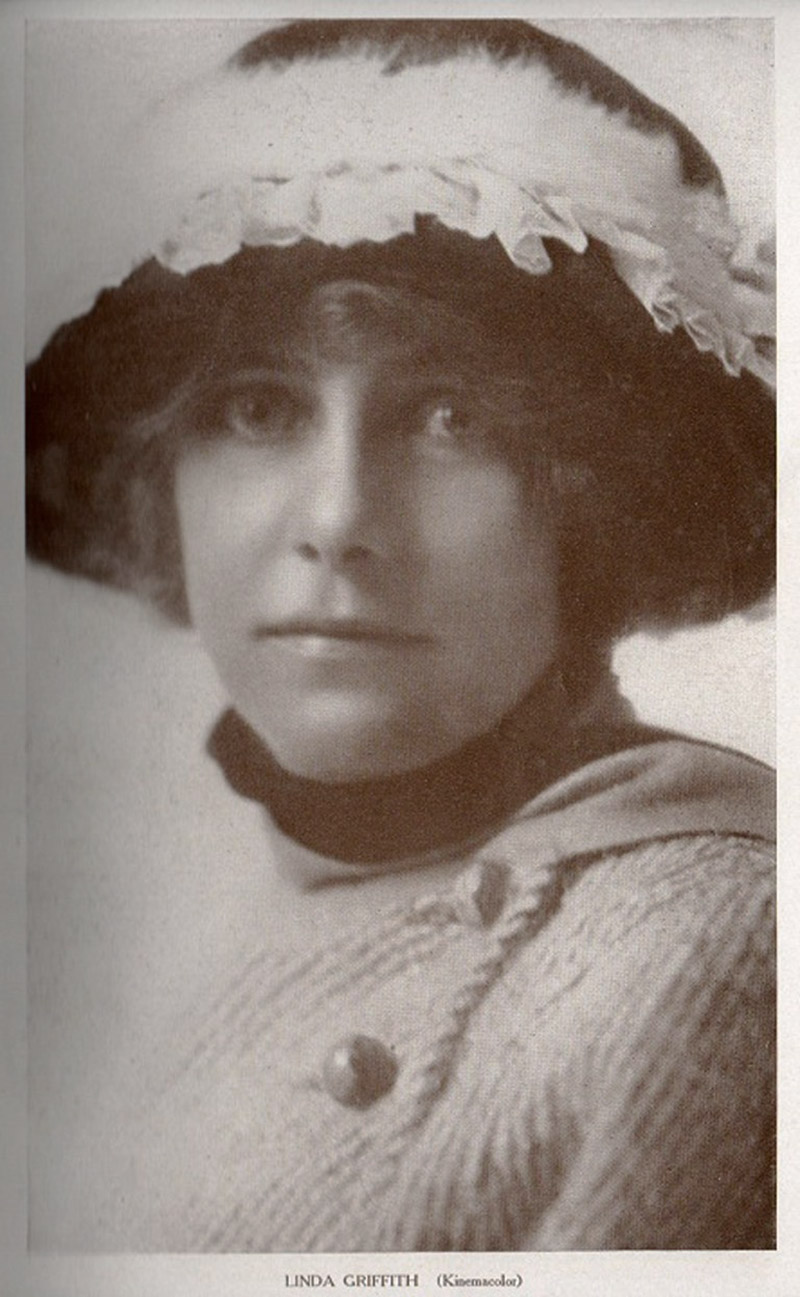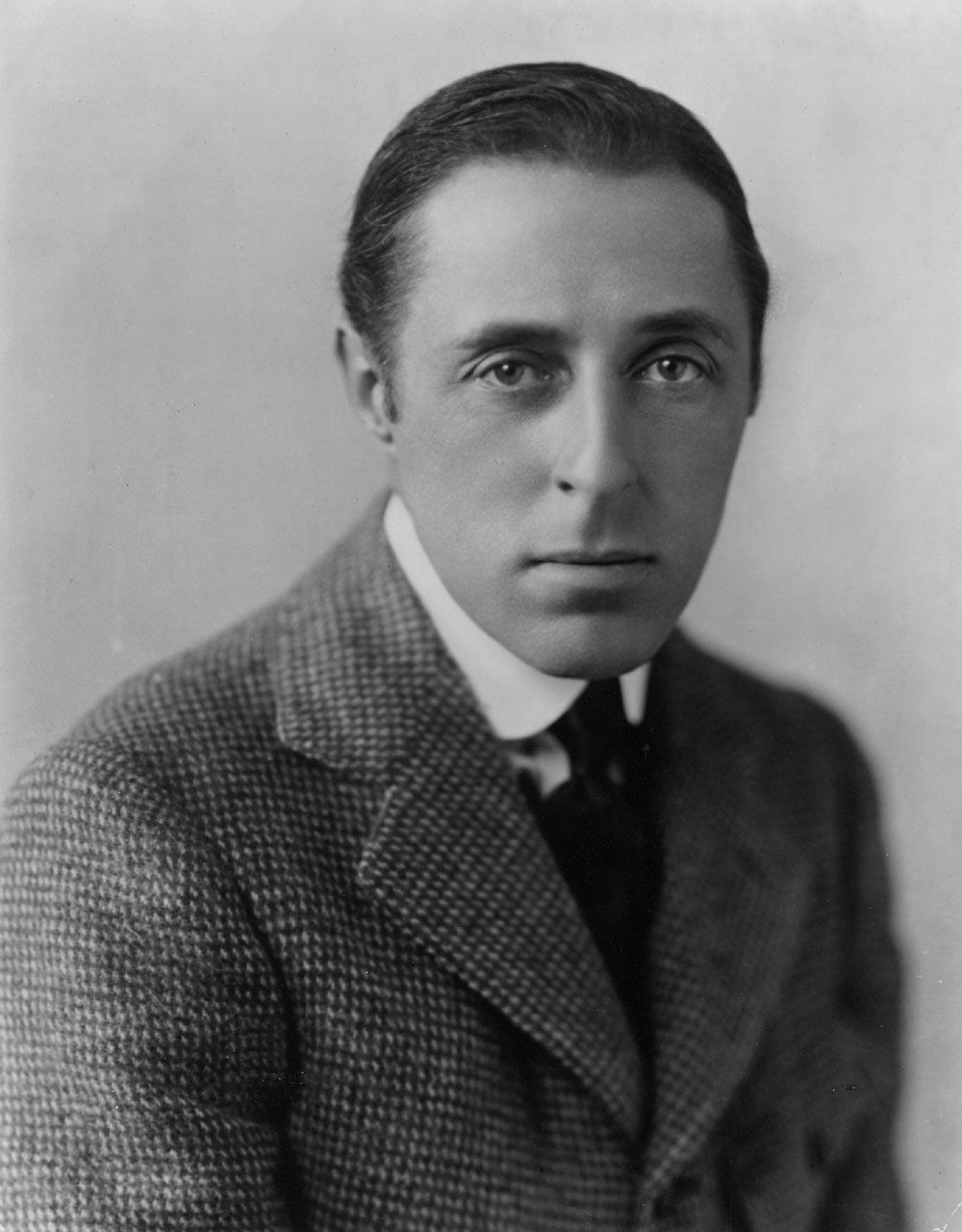
Linda Arvidson Griffith.
|
Writing under the name "Mrs. D.W. Griffith," actress and screenwriter Linda Arvidson (1884-1949) discusses her husband's 1910 cinematic production of "Ramona" in her 1925 memoir/biography of David Wark Griffith's Biograph years (1908-1913), titled "When the Movies Were Young."
She notes (pg. 16) that D.W. had portrayed the character Allesandro in a stage production of "Ramona" in Los Angeles in late 1905. When he wrote a play in 1906, he included traditional Mexican songs he had first heard in the "Ramona" play (pg. 20). (All page references are to the 1969 Dover edition of the book.)
After two years with the Biograph Company in New York (1908-1909), D.W. left for Los Angeles with a Biograph crew "a few days after Christmas" 1909 (pg. 146). They weren't the first to arrive; Selig, Kalem and the New York Motion Picture Patents Corp. preceded them (pg. 143).
Mrs. D.W. Griffith writes (pp. 169-170):
An urge to do "Ramona" in a motion picture possessed Mr. Griffith all the while we were in California, for the picturesque settings of Helen Hunt Jackson's deep-motived romance were so close at hand. Several conferences had been held on the subject in New York, before we left [for Los Angeles]. But in order to make a screen adaptation of this story of the white man's injustice to the Indian, arrangements would have to be made with the publishers, Little, Brown & Company. They asked one hundred dollars for the motion picture rights and the Biograph Company came across like good sports and paid it, and "Ramona" went on record. It was conceded to be the most expensive picture put out by any manufacturer up to that time.
To Camulos, Ventura County, seventy miles from Los Angeles, we traveled to do this production of "Ramona." For Camulos was one of the five homes accredited to the real Ramona that Mrs. Jackson picked for her fictional one. She picked well.
What a wealth of atmosphere of beautiful old Spain, Camulos's far-famed adobe offered! Scenes of sheep-shearing; scenes in the little flower-covered outdoor chapel where Ramona's family and their faithful Indian servants worshiped; love scenes at Ramona's iron-barred window; scenes of heartache on the bleak mountain top but a few miles distant where Alessandro and Ramona bury their little baby, dead from the white man's persecutions; and finally the wedding scene of Ramona and Felipe amid the oranges and roses and grass pinks of the patio. Even bells that were cast in old Spain rang silently on the screen. The Biograph Company brought out a special folder with cuts and descriptive matter. The picture was Mr. Griffith's most artistic creation to date.

Director David Wark Griffith.
|
Mary Pickford, playing the title character, was still only "The Biograph Girl," as Biograph didn't give out actors' names until 1913 (pp. 188-189). It was all about the director. Pickford was earning "about forty dollars a week at this time" (pg. 147), plus $14 in weekly expenses, which the whole company received (pg. 153). Meanwhile, D.W. was earning a weekly salary of about $50 plus a percentage of every foot of film sold to theaters — which, by the end of 1909, "amounted to nine hundred and a thousand a month" (pg. 134).
Regarding the costuming for "Ramona," Mrs. Griffith writes that for a subsequent production in 1911, actor and sometime-director George Nichols
departed via the Owl for San Francisco to get the costumes from Goldstein & Company. There was so little to be had in costumes in Los Angeles. Mr. Nichols had also journeyed to San Francisco for costumes for "Ramona" the year before.
And what of Ramona and Alessandro's baby? According to the lore, the infant arrived at Camulos on a train; nobody knew from whence it came, and it just as mysteriously disappeared after production.
Mrs. Griffith provides a possible clue in her account of a 1913 picture in which a baby was needed — in this instance, an Anglo baby (pg. 204):
It was, as matter of fact, a tiny, lightly colored, colored baby from a Colored Foundling Home, whom we often used for the photographic value of its black eyes.
There is (at least) one problem with Mrs. Griffith's recollection of the making of "Ramona." There is no wedding sequence between Ramona and Felipe in the final cut of the picture.
Is she simply misremembering? In the introduction to the 1969 Dover edition of Mrs. Griffith's book, film historian Edward Wagenknecht notes the passage of time between the events and the publication (in the case of "Ramona," the 15 years from 1910 to 1925). He states that the author makes "few errors of fact" (pg. viii), but then he goes on to point out a few.
Her memory of the sequence, however, with its "oranges and roses and grass pinks of the patio," seems too vivid for a memory lapse. Film historian and Pickford expert Hugh Munro Neely posits alternate theories (pers. comm. via Maria Christopher, 2019):
More likely would be that he shot the wedding, but it was not included in the finished picture. There are two "original sources" for Ramona held by the Library of Congress. They have both the copyright deposit and the original negative. Judging from the records I have available, the copyright deposit, which is a "paper print," may be slightly longer than the original negative, but it's likely that is only because of leader at the beginning or end of the paper print. The original negative, which is thought to be complete, ends as we have seen it.
[...] There are two factors, in my opinion, mitigating against the wedding ending having been attached to the film. First, the original negative runs 997 feet in length. Generally, Griffith was limited by his employers to turning in films no more than 1,000 feet in length. Griffith was in favor of longer films, but the Biograph company did not permit him to release anything longer that a single reel in 1910. 1,000 feet is the normal maximum for a full reel [...]
Second, the wedding ending doesn't make strong sense, given the way the story is truncated. The existing ending, with Felipe arriving shortly after Alessandro's murder, is dramatic and powerful, and cutting quickly to a wedding would likely seem too abrupt and close to the murder. Remember that Felipe's search for Ramona is fast, and presented in parallel action, cutting back and forth with the events leading to Alessandro's death. Had Griffith included Ramona's mental collapse after Alessandro's death, that could have created the necessary distance prior to the wedding — but then Griffith would have been well over the permitted 1,000 foot running length. As it is, when Felipe arrives upon the scene of Alessandro's death, Ramona is in mourning, but not out of her head.
Finally, the earlier portion of the film does not give Ramona much of a chance to relate to Felipe in a warm and brotherly way. He makes his approach to her and she declines his offer regretfully but quickly. So, there is no setup to suggest that Ramona might love Felipe as well as Alessandro.
I think it possible that, writing 15 years later, and not having the opportunity to review the film itself, Arvidson may have remembered a scene from the famous book that she believed had been shot, but actually was not filmed. Or as I said, it's possible that Griffith may thought about shooting such a scene or even shot it, but not included it either because it didn't fit well, or simply made the film longer that he was permitted to submit. Griffith did a remarkable job of reducing the story to a single reel running roughly 17 minutes in length — and I don't believe it would be like him to shoot a lot more film, which was pretty expensive then, than he could use. Still, the only way to know for sure is to look at the paper print copyright record.